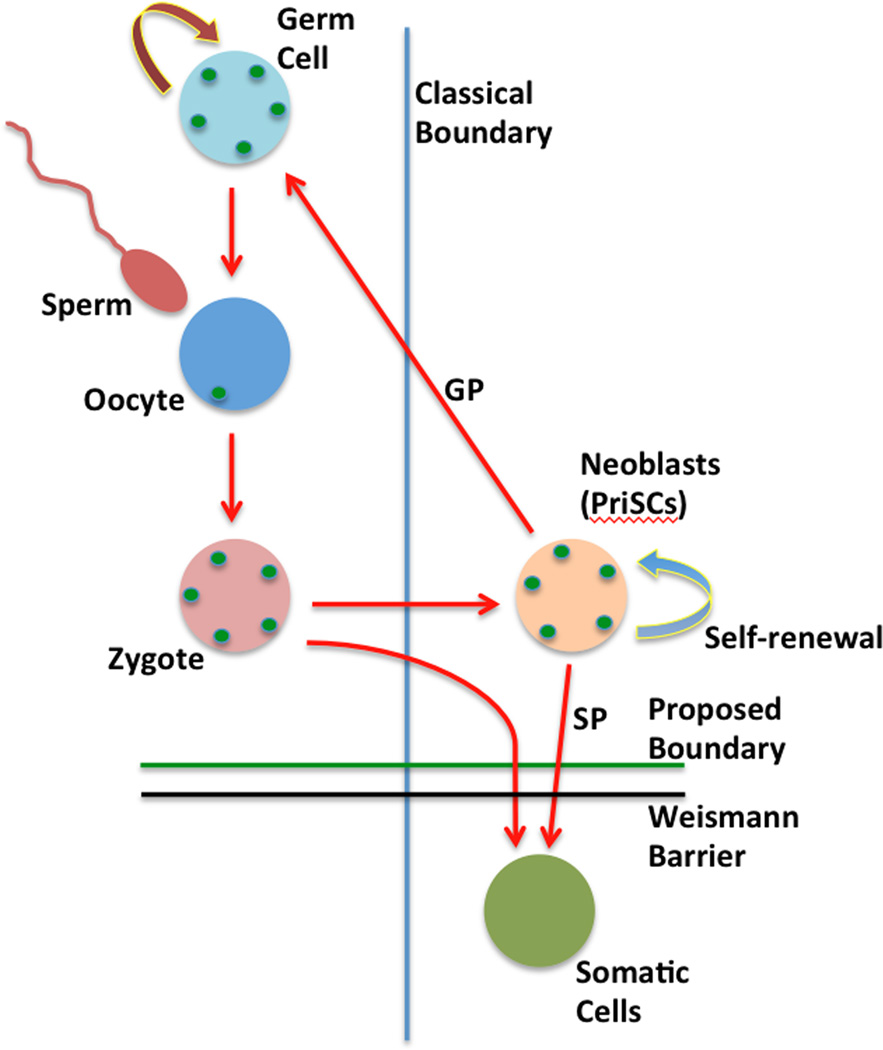Figure 7.
“The germline cycle in freshwater planarians. Freshwater planarians possess a population of stem cells, the so-called neoblasts, which represents the primordial stem cells in these organisms (PriSC). Neoblasts are able to give rise to the germ cells and to somatic cells. Germ cells give rise to oocytes and sperm, which jointly give rise to the zygote. The zygote gives rise to both somatic cells and the PriSCs. The planarian PriSCs have unlimited self-renewal and both germ potential (GP) and somatic potential (SP). Green dots represent the presence of nuage granules and germ plasm components. The vertical blue line represents the position of the germ-to-soma boundary, as classically understood. The horizontal green line represents the proposed position of the germ-to-soma boundary as postulated in the Primordial Stem Cells hypothesis (of Solana, 2013); this coincides with the Weismann barrier (solid black line) in freshwater planarians.” This figure is an original simplified drawing, based on Fig. 2 of Solana (2013; open access; see that paper and this review text for details; abbreviations and some label designations were changed in the quoted legend). Note that the Weismann barrier essentially prevents somatic cell mutations from affecting the germline and future generations. The PriSCs can allow some planaria to renew all of the cells of their bodies continuously, thus potentially avoiding senescence.

